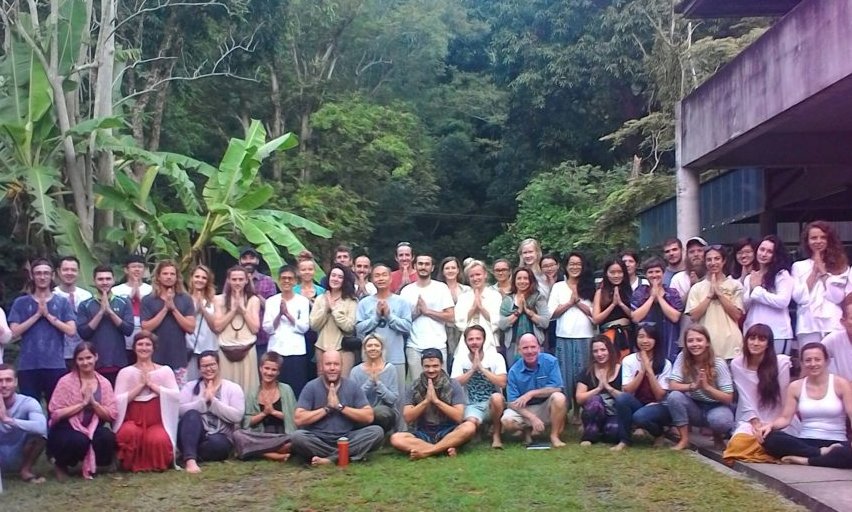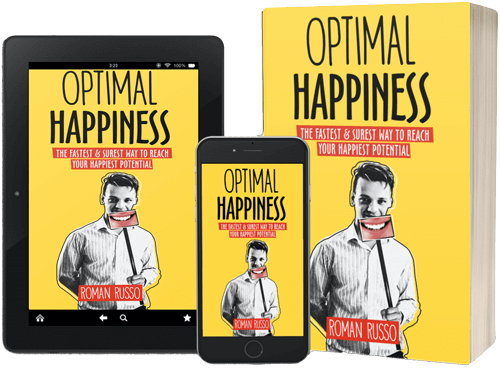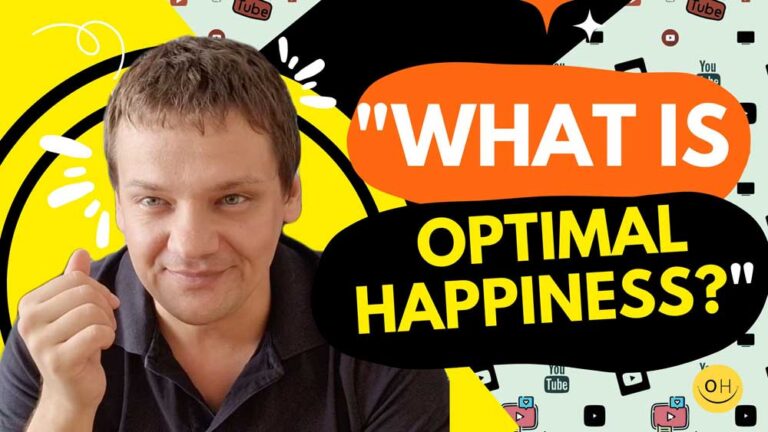
The goal of Buddhism is to end all (“Dukkha”) Suffering:
Buddhism = End Suffering
I learned this when I participated in a Vipassana 10 Day Meditation retreat, which I have done at Wat Suan Mokkh (aka Garden of Liberation) located in Surat Thani, Thailand. This is the post about my experience and what I have learned during these 10 days.
My experience in a sentence:
10 Day Meditation = Samurai Bootcamp
I wanted to go to such a place already for at least a year, but I was seriously considering quitting the first two days when I arrived at the retreat. In the end, I asked myself what the pros and cons of staying are. My pros weighted more than the cons, so I decided to stay. Specifically:
What Made This Retreat to Tough Was:
1) We had to wake up every day at 4am
2) We slept on concrete beds, with a pillow made of wood
3) We were not allowed to speak or make eye contact
4) Girls and boys had to stay separately
5) There were no mirrors
6) We had 1 or 2 meals per day
7) We had to be in a present moment with our thoughts
8) Reading, writing, computers, or electronics were not allowed
9) We were not allowed to harm mosquitos, which were plenty
10) We had chores
11) In toilets, there was no toilet paper, just a bucket of water
12) Days seemed to go for longer, and I was often very bored
Our Schedule for 10 Days:
4h00 – Rise and Shine
4h30 – Morning Reading + Group Meditation
5h15 – Yoga or Tai Chi
7h00 – Morning Talk
8h00 – Breakfast, Chores, and Hot Spring
10h00 – Sitting Meditation
11h00 – Walking Meditation (guided)
11h45 – Sitting Meditation (guided)
12h30 – Lunch & Hot Springs
14h30 – Meditation
15h30 – Walking Meditation
16h15 – Sitting Meditation
17h00 – Sitting Meditation or Chanting
18h00 – Tea & Hot Springs
19h30 – Group Sitting Meditation
20h00 – Group Walking Meditation
20h30 – Group Sitting Meditation
21h00 – Bed Time
21h15 – Dorms Gate Close
21h30 – Lights Off
Why Retreat Was Awesome:
1) We learned about Buddhism and how to meditate
2) We discovered Yoga
3) I had a personal interview with one of the highest respected senior 85 y.o. monk
4) There were hot springs that we could visit every day
5) Food was delicious and nutritious everyday
6) We were in the middle of the Thai jungle nature
7) There were tons of different animals and insects – mosquitos, lizards, ants, butterflies, scorpions, snakes, monkeys, and so on. A giant lizard personally greeted me in my room on day 1.
8) I had 3 significant realizations
My Realizations
1) Feeling my Body, Feelings, and Mind – On a day 3, I felt a strange tickling sensation in my arms, forehead, and body. I asked one of the junior monks about it. He said that I was in touch with my feeling, mind, and body, and therefore I was ready to do some more in-depth work.
2) “I am a Mirror …” – On a day 5, I suddenly head an urge to say:
“I am a mirror through which The Universe is manifesting itself. I surrender myself to the universe. I surrender every cell of my body” – which I repeated several times.
I noticed in the mirror, which represented that my body was not yet clear, so I started to search for imperfection sources, which were tensions in my body and my mind. Upon identifying these tensions, I was able to smoothen them out, and that’s where I had the most precise and most relaxing moment in my life.
3) There is No Ego – On day 7, I was working with my attachments (see below) when I experienced the moment where I had “no ego”. It was very liberating, powerful, and scary.
End of Ego – Selfishness, Attachments, and Happiness
Having “No Ego” is the ultimate goal of Buddhists aimed at the End of all Suffering.
Buddhism = No Ego = End of Suffering
This is perhaps why Buddhists wear simple cloth, eat food only for nutrition, exclude themselves from modern-day distractions, stay away from the opposite sex, and follow many other strange habits.
1) The metaphor for having no ego: To have “No Ego” is like getting older and have some things that were important to us before, such as partying, become less important. This is how losing the Ego feels.
It is like listening to different sounds on a background that we usually tune out, such as the birds’ singing. These sounds are contently there, but because they are not immediately necessary to us, we gradually become deaf. In this way, we are selective about what we allow to go inside our awareness and what keeps out. This proves that we can tune everything out, including these things that we think are important to us right now, including pain.
When pain arises, such as when we sit cross-legged for hours, we notice the problem, but we don’t need to do anything besides noticing. In this way, catching is just seeing that the is some tension in the muscles, which we usually connect to pain, but not going further than muscle tension, as the problem is not important to us, in a similar way like birds singing is not important.
Indeed, the pain will go away in a similar way to everything else, which Buddhists call impermanence.
2) Impermanence: The idea of impermanence was drilled into my head when it came to having no attachments and “no ego”. Buddhists say that if we are attached to something, we become slaves to it. However, we perceive attachments as permanent, while nothing is permanent. Pain and other emotions are impermanent, so is the world, so is our bodies. We are all going to get sick, old, and die.
3) Selfishness: For Buddhists, oppose to having No Ego is called Selfishness. It is the source of all suffering in the world. From one side ego was just fabricated by our mind. On the other side, whenever “I” emerges, it immediately brings Suffering to the self’s bearer and perhaps to the world. For example, when we love selfishly, we can get hurt or hurt others. When we want something, like a car, we don’t have it, causing us Suffering. And the more we want, the more we suffer.
4) Enough: Today, however, we want more things than ever. Each attachment is causing us additional problems. This is why Buddhists are so emphatic about the idea of Enough. Most people always want more and more without End. However, overeating will make us fat. Spending too much will make us broke, and the same is right for everything else.
This is why it is so important to have moderation, not too little and not too much. Too little is not good, as after Buddha left all the riches, titles, and prestige, he discovered that again hindered him from spiritual practice. However, the same was true for too much.
5) Attachments: Our mind, therefore, has four different attachments according to Buddhism:
a) Sex – This is perhaps the most significant attachment we generally speak in our lives, as directly or indirectly spending time, money, and mental capital pursuing “sex” by pursuing such things as style.
b) Incorrect opinions – Ignorance is not bliss to Buddhists. It is the other way around. This is why Buddhists are so prominent on Dharma (law of Nature), which is equal to the universe’s law. According to Dharma, everything works, and Dharma is visible and testable, almost like the law of “Cause and Effect.” Following Dharma brings wisdom while doing the reverse in Ignorance.
c) Traditional activities and practices – We are attached to what used to be and what can be. Of course, culture’s power goes deep and influences our Ego, but there is also a lot of ignorance in culture, such as ignorance in wars that sometimes go from one generation to the next.
d) Ego “I” or “My” – We have a strong attachment to our identity. While before, Buddhists believe that people lived without Ego, and they would spend virtually all the time in a meditative state. Today, however, we have so many distractions, each contributing to the formation of this harmful thing called “ego.”
There is No Religion in Buddhism
Buddhism is like a self-help course. The goal is to end Suffering, which is done through a series of techniques and procedures, guaranteeing a specific result if we follow. Buddhists work with Dharma (aka law of Nature), meaning that they study the human body and how it reacts naturally. There is nothing religious about Buddhism.
Still, Buddhists admit that religious components may benefit individual practice, motivating a person to continue following a course. However, blindly following religious add-ons without actually practicing what it teaches may take away from personal experience.
In this respect, Buddhism often is called a religion, but it provides evidence to its practice before asking people to believe in its teaching. Oppositely, other religions often ask for belief before giving any tangible evidence. And while belief is a powerful placebo, it can make people see things that are not there.
Why I Decided to Attend a 10-day Meditation Retreat
Many people asked me why I wanted to do 10-day meditation. Most people who come to retreat were looking for ways to decrease Suffering (such as depressions), find meaning, or achieve some other form of spiritual enlightenment.
Indeed, you should have heard some of the testimonials on the last day of meditation. One person was angry, another bipolar, another depressed, and so on. Listening to all these people, I realized how much Suffering exists in a world today, with every person suffering in their way. Still, most people had only good things to say about practice, meaning that it helps.
Still, my reason was Research. Indeed, as someone who studies happiness as a study, I have to check every aspect of happiness to understand what works and what does not. I also heard a lot of good about meditation, how it is taking over the world today, and all the benefits that come with it, so I had to explore deeper. Said, I see the value of no suffering, but I have to question some parts of Buddhist practice.
Interestingly enough, I meditated and called myself a Buddhist way before coming to the temple. I wrote a book on how Marketing affects our lives; it has over 60%; most of my ideas are already discussed in Buddhism. Little did I know what it meant to be a Buddhist and to meditate before the 10-day meditation, which just reinforced my resolution.
My Criticism of Buddhism
I like Buddhism, but I’m afraid I also have to disagree with some things it teaches, which is why we don’t have more Buddhists in the world today. Specifically:
1) Hand Swinging Exercise: One exercise we learning during our stay in the temple is that if we swing our arms back and forth around, which we were suggested to do 800-1000 times per day, it helps with health. For example, it can release back pain, which many meditation practitioners have because of their sitting posture. The reason why I disagree with this exercise is that our body is supposed to be constantly moving. It is Dharma. As such, Buddhists often disregard this part of their lives and give virtually no attention to actively exercising their bodies, which is a mistake. Indeed, a person is better off running, doing push-ups, ridding bicycles, and swimming, than swinging their arms.
Of course, I understand the point of this exercise. Monks just don’t want to overstimulate their minds as it can hinder their spiritual practice. Still, it can be easy to develop a better routine, such as we often see in Yoga, Martial Arts, and all sorts of other physical practices.
2) Eliminating Suffering is Not Equal to Increasing Happy: Buddhism tries to put an end to all Suffering, but “when Martin Seligman, clinical psychology, would cure people of depression, he thought that people would be happy. Instead he found empty humans”. This is to say that “Curing Suffering,” which is a double negative, is not equal to Increasing Happiness, which is a double positive.
Indeed, Buddhists are against high arousal emotions as they can distract us from achieving spiritual practice concentration. Still, there are other ways to meditate in high arousal situations, such as by doing high concentration work, and there are different ways to be happy, such as focusing on the positive spectrum of emotion, such as in my version of being happy today and forever.
Shortcut to Anapanasati Meditation
Anapanasati, “mindfulness of breathing,” was the original form of meditation taught by Gautama Buddha himself, which is still practiced by practitioners from all over the world today. It is an easy 16 step formula, which promises enlightenment.
We at the 10-day meditation, we learned a shortcut to this formula, which is more like 6 step system if you ask me:
1.1 – Long breath
1.2 – Short breath
1.3 – Experiencing the whole body
1.4 – Calming the body
2.1 – High emotions
2.2 – Low emotions
2.3 – Changing emotion
2.4 – Calming the mind
3.1 Lust – Pulls us towards something
3.2 Negative emotions – Pulls us away from something
3.3. Confusion – Makes our mind go around in circles
3.4 Distraction – Attachments
4.1 Contemplating the importance – of breath, feelings, and mind
4.2 Contemplating fading away from attachments
4.3 Quenching attachments – no existence of attachments
4.4 Contemplating throwing back – returning to everything we were once attached
Indeed, Buddha himself says that 2.1 – 3.4 are optional and only should be practiced by people who want to dedicate their lives to Buddhism. Step 4.1 I took out because it is “same same” (i.e., similar) to steps 1.1 – 1.4. Step 4.3 is the same as step 4.2.
1.1 Long Breath – Buddhist Happiness Formula
Now I won’t go into all the 16 step formula details, but I will focus on the most important part, which is the 1.1 – Long Breath. Indeed, when we breathe long, our breath becomes calm, slow, and removes many tensions of our body, meaning that just by breathing, we can draw certain negative emotions that accumulate throughout the day. Oppositely, 1.2 Short Breath increases the agitations of our body and often growing negative emotions. However, we should not disregard Short Breath because by breathing both Long and Short, we can create a contrast that can help us better understand our emotions.
The Secret of Thai People
The first time I saw Thai people sitting in their houses in Thailand, they sat on the floor in a funny half tilted position. The reason for this was explained to me during the 10-day meditation retreat, whereas it helps to open meditation postures, so we can eventually sit in a full lotus position. Indeed, we were suggested to use this position when our legs would get tired during the 8hr meditation day, removing tension from our tired legs.
















5 thoughts on “A, B, C of Vipassana 10 Day Meditation: Buddhism & Happiness”
Pingback: “Flow” Wasn't Originally Invented by Mihaly Csikszentmihalyi
Pingback: What Is Sleep Tourism and Why Is It Trending?
Pingback: Asceticism: The Art of Using Pain to Create Happiness
Pingback: Meditation: Why It Is The Ultimate Tool For Happiness
Pingback: Will Christianity Make You Happy?